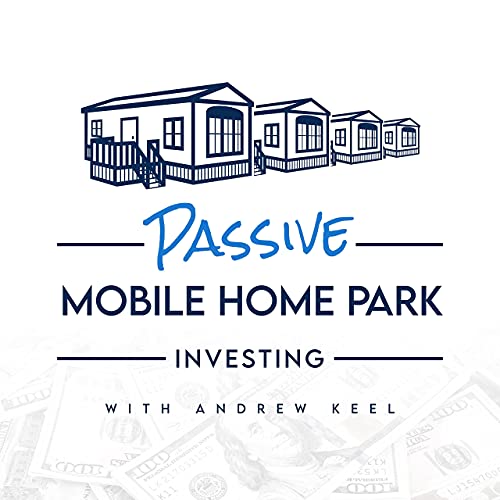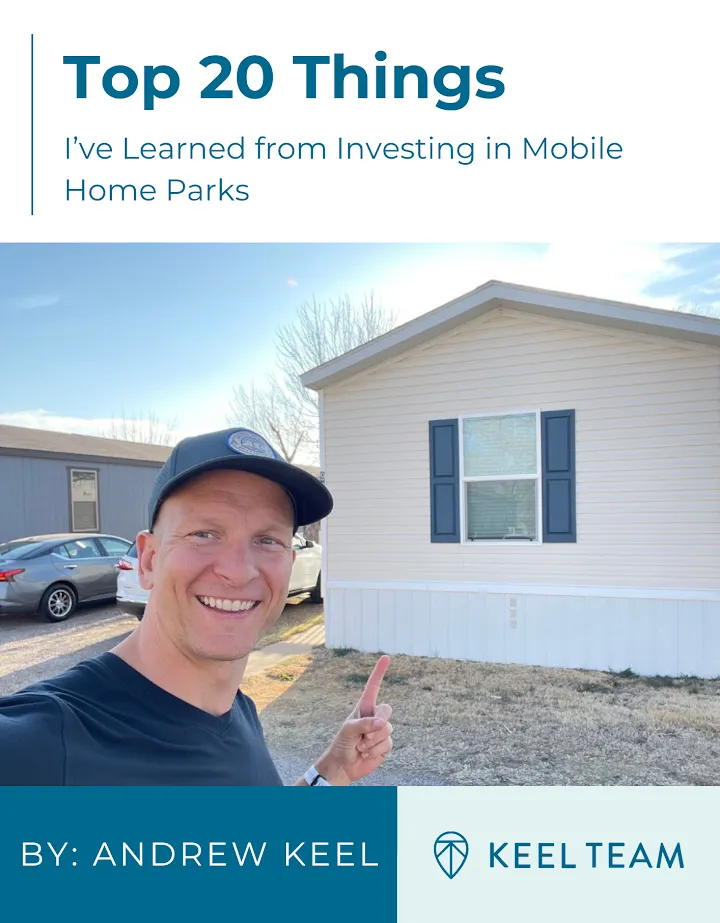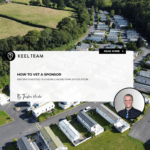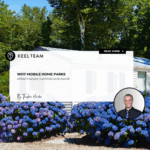Flipping vs Holding: Which Mobile Home Park Investing Strategy Wins in 2025?
-
 Tristan Hunter - Investor Relations
Tristan Hunter - Investor Relations
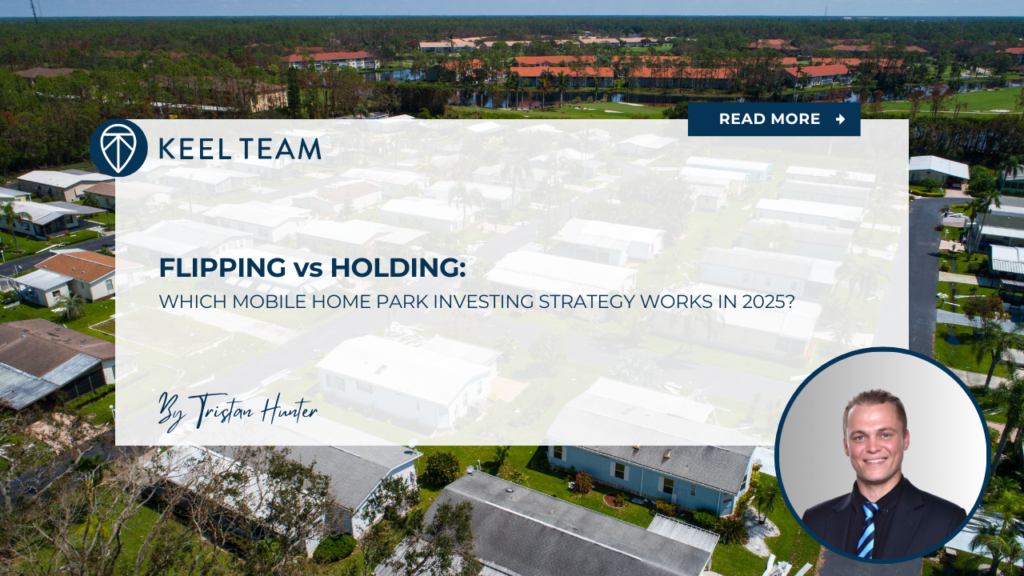
Mobile home park investing offers compelling strategies for wealth-building. Today, we’ll discuss flipping for quick profits or holding for long-term cash flow. Both approaches may yield strong returns, but they cater to different investor goals, risk tolerances, and market conditions. In 2025, with housing affordability pressures and evolving economic trends, choosing the right strategy could make all the difference. This article compares flipping (upgrading and selling) versus holding mobile home parks, breaking down market conditions, financing options, and risks to help you decide which approach might suit your investment style.
The Mobile Home Park Investing Flipping Strategy
Flipping a mobile home park involves buying a property, making strategic improvements, and selling it for a profit, often within one to three years. This short-term strategy may appeal to investors seeking quick returns or those with expertise in property turnarounds.
How Flipping Works
Start by identifying undervalued mobile home parks with potential for improvement. These properties might have outdated infrastructure, high vacancy rates, or mismanagement. After purchasing, you could invest in upgrades like repairing utilities, paving roads, or adding amenities such as playgrounds. Once the property’s value increases, sell it to another investor or operator for a profit.
Potential Benefits of Flipping
Flipping may offer faster returns than holding, allowing you to reinvest capital into new projects. In hot markets, upgraded mobile home parks could attract buyers quickly, especially as demand for affordable housing grows. Additionally, flipping might minimize long-term exposure to operational risks, such as tenant turnover or maintenance costs.
Risks of Flipping
Flipping isn’t without challenges. Renovation costs could exceed budgets, especially if unexpected repairs arise, like replacing aging septic systems. Market timing also matters; a sudden economic downturn might reduce buyer interest, leaving you with a property that’s hard to sell. Moreover, flipping requires hands-on management and expertise to execute upgrades efficiently.
Download our FREE eBook on the Top 20 things to know BEFORE investing in mobile home parks!
The Mobile Home Park Investing Hold Strategy
Holding a mobile home park focuses on generating steady cash flow over the long term, often through rental income from lot leases or tenant-owned homes. This strategy may suit investors who prefer passive income and are comfortable with ongoing property management.
How Holding Works
When holding, you acquire a mobile home park and maintain it as a rental business. Income may come from leasing lots to tenants who own their mobile homes or renting out park-owned homes. Over time, you might increase rents, improve occupancy, or add value through minor upgrades to boost cash flow.
Potential Benefits of Holding
Holding could provide consistent, predictable income, especially in stable markets with high demand for affordable housing. Long-term ownership may also offer tax advantages, such as depreciation deductions. Additionally, mobile home parks often have low tenant turnover, as residents face high costs to relocate their homes, potentially ensuring steady occupancy.
Risks of Holding
Holding comes with its own risks. Ongoing maintenance, such as road repairs or utility upgrades, could erode profits. Economic shifts, like rising interest rates, might affect tenant affordability, leading to vacancies. Additionally, managing tenants and complying with local regulations may demand significant time or require hiring a property manager, adding to costs.
Market Conditions Shaping 2025
The choice between flipping and holding mobile home parks depends heavily on market conditions in 2025. Understanding these trends can help you align your strategy with current opportunities.
Demand for Affordable Housing
The ongoing shortage of affordable housing could drive demand for mobile home parks. With median home prices in the U.S. hovering around $450,000, per recent housing data, mobile homes offer a budget-friendly alternative. This trend may favor both flipping (as upgraded parks attract buyers) and holding (as stable tenant demand supports cash flow).
Interest Rates and Financing Costs
Interest rates, projected to remain elevated in 2025, could impact both strategies. Higher rates might make financing costlier for flippers, increasing the cost of acquisition and renovations. For holders, elevated rates could raise mortgage payments, squeezing cash flow unless offset by higher rents. However, mobile home parks often benefit from seller financing, which could mitigate these challenges.
Regional Market Variations
Market dynamics vary by region. Fast-growing areas like Boise, Idaho, or Columbus, Ohio, might offer flipping opportunities due to rising property values. Meanwhile, stable, rural markets with consistent demand could favor holding for long-term cash flow. Researching local vacancy rates, population growth, and job markets can guide your decision.
Financing Options for Mobile Home Park Investing
Financing plays a critical role in both flipping and holding mobile home parks. Exploring your options can help you maximize returns while managing risks.
Flipping Financing
For flipping, short-term financing options like hard money loans or bridge loans might provide quick access to capital. These loans often have higher interest rates but allow flexibility for rapid purchases and renovations. Seller financing, where the current owner acts as the lender, could also reduce upfront costs, especially for distressed properties. However, you’ll need a clear exit strategy to repay these loans upon sale.
Holding Financing
For holding, long-term financing options like conventional mortgages or commercial loans might offer stability. These loans typically have lower interest rates but require strong credit and steady income. Seller financing is also common in mobile home park deals, allowing you to negotiate favorable terms, such as lower down payments or extended repayment periods.
Creative Financing Opportunities
Both strategies can benefit from creative financing. For example, partnering with other investors might spread the financial risk. Alternatively, leveraging government-backed loans, like those from the USDA for rural mobile home parks, could provide affordable capital for acquisitions or upgrades.

Comparing Risks and Rewards
To choose between flipping and holding, weigh the risks and rewards based on your goals, resources, and market conditions.
Time Horizon and Effort
Flipping may demand intense effort over a short period, requiring you to oversee renovations and market the property for sale. Holding, conversely, might involve less upfront effort but requires ongoing management. If you prefer quick projects, flipping could align better; if you seek passive income, holding might be the way to go.
Capital Requirements
Flipping often requires significant upfront capital for purchases and upgrades, with the potential for high returns if executed well. Holding might involve lower initial costs, especially if you acquire a stable property, but profits accumulate gradually. Assess your available capital and tolerance for delayed returns when deciding.
Risk Tolerance
Flipping carries higher financial risk due to market volatility and renovation uncertainties. Holding might offer more stability but exposes you to long-term operational risks, like regulatory changes or tenant issues. Consider your comfort with uncertainty and ability to manage ongoing responsibilities.
Which Strategy Suits You in 2025?
Choosing between flipping and holding mobile home parks depends on your investment goals and market savvy. If you have the skills to turn around distressed properties and a knack for timing the market, flipping could deliver substantial profits. Markets like those in the Southeast or Midwest, with growing populations, might offer prime flipping opportunities in 2025.
On the other hand, if you prefer steady income and long-term wealth-building, holding might be the better fit. Stable markets with consistent demand, such as rural areas with limited housing options, could support reliable cash flow. Additionally, holding allows you to build equity over time, potentially leading to larger gains if you eventually sell.
Tips for Potential Success
Regardless of your choice, thorough due diligence is key. Research local market trends, inspect properties for hidden issues (like outdated utilities), and consult with experts, such as property managers or real estate attorneys. For flipping, focus on cost-effective upgrades that boost value, like improving curb appeal. For holding, prioritize tenant satisfaction to maintain occupancy and cash flow.
Final Thoughts
Flipping and holding mobile home parks both offer unique opportunities in 2025, driven by the growing demand for affordable housing. Flipping might suit those chasing quick profit potential and willing to tackle renovations, while holding could appeal to investors seeking stable, long-term income potential. By understanding market conditions, exploring financing options, and assessing your risk tolerance, you can choose the strategy that aligns with your goals. Dive into the mobile home park market with a clear plan, and you might find success in this dynamic investment space.
Are you looking for MORE information? Book a 1-on-1 consultation with Andrew Keel to discuss:
- A mobile home park deal review
- Due diligence questions
- How to raise capital from investors
- Mistakes to avoid, and more!
Disclaimer:
The information provided is for informational purposes only and is not investment advice or a guarantee of any kind. We do not guarantee profitability. Make investment decisions based on your research and consult registered financial and legal professionals. We are not registered financial or legal professionals and do not provide personalized investment recommendations.

Tristan Hunter - Investor Relations
View The Previous or Next Post
Subscribe Below 👇
